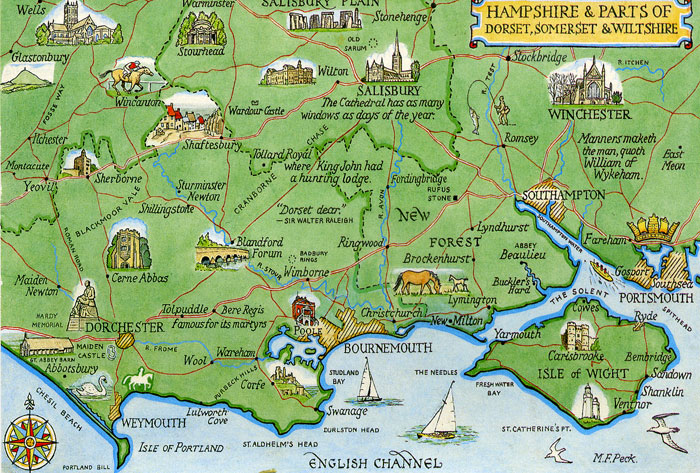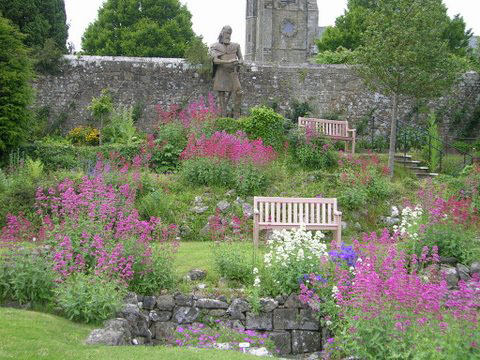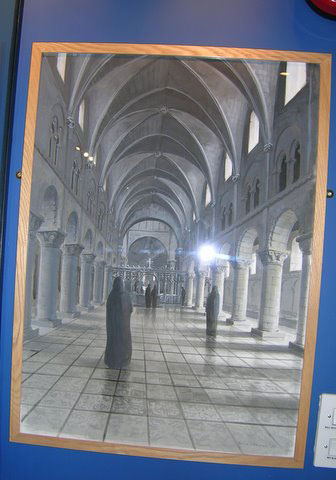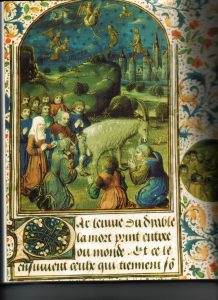As the writer of historical fiction, I do a LOT of research before I start writing my novels. I have a huge library comprised of biographies, maps, flower, tree and bird guides, herbal healing, histories, diaries etc so that I can find out how people lived in the past, what they ate, how they dressed, who was in charge and what was going on around them, and so on. The best thing of all, I found, was to be able to visit the sites I was writing about, to take photographs, to buy maps and brochures and pamphlets, and books that aren’t available in Sydney where I live. I found it so helpful to be able to walk in the footsteps of my characters, to see what they might have seen in terms of buildings (or their ruins), as well as the countryside, and at the same time, find inspiration from my surroundings. But it’s always hard to know whether you should find out everything you need to know before you start, because the scope is so huge you may get thoroughly side-tracked and NEVER start! So here’s how I go about finding out what I need to know and how I balance that with actually getting on with my writing:
I do a little research, enough to get some idea of the history of that period and where and when events take place, and then I start writing. For example, I started A Ring Through Time while in Adelaide on a May Gibbs Fellowship, basing the story on what I remembered from a holiday at Norfolk Island some ten years before that. With the story in my mind, I knew all the things I needed to find out when I actually went there – which narrowed down my field of research, but meant a fair bit of rewriting once I went to Norfolk Island and began to find out more about the Second Penal Colony in the 1850s, and the situation I wanted to write about. Pictured is a map of the settlement on Norfolk Island in the 1850s and below it is a picture of Government House as it is today, but where the commandants once lived. A Ring Through Time is what I call a ‘fictional history’ in that the commandant and his family are fictional but I’ve woven them around real aspects of that brutal past and what happened there, and I’ve also included people who were on the island at that time. A Ring Through Time won the Society of Women Writers biennial book award in the YA category, and was runner up for the Sisters in Crime Davitt award in the YA category.
Before I started writing The Janna Mysteries (now retitled and published as The Janna Chronicles) I downloaded maps, did some research, and found out where (and how) Janna would live, which places she would go to, and I worked out some of the problems, crimes and mysteries she would encounter along her journey. Once I started writing the story, and especially once I’d been over to the UK to walk in Janna’s footsteps, the writing became easier as I was then able to see for myself where she went and, along the way, pick up brochures, books and heaps of other information that proved invaluable. Of course my ideas also changed as I roamed about, gaining inspiration and new story ideas. So basically I researched a lot of the story as I went along. The danger of writing too much early on is that you might find out that your story is wrong, that it’s based on something that either didn’t, or couldn’t have happened, and then you have to start again, or do some rewriting. So there is no right or wrong way, each has it’s pluses and minuses and difficulties. The trick is to find out what works for you, and do it that way.




 In Book 3, Unholy Murder (previously Lilies for Love) Janna takes refuge in an abbey. She is expected to take part in abbey life, so I was able to Google and find out about various abbeys in England, plus the hours (and names) of their services, day and night, all of which the nuns were expected to observe in medieval time. I was also able to download a copy of the Mass in Latin, which is how Janna would have heard it. Because my character lives in a particular place, I Googled a map of the area, plus maps of other places she visits. Pictured are the ruins of Shaftesbury Abbey, where I did a very good audio tour explaining life in an abbey. Below that is an artist’s impression of how the abbey would have looked before the Dissolution of the Monasteries during the time of Henry VIII. Abbeys were immensely wealthy and powerful at the time I’m writing about. While in England, I bought some Ordnance Survey maps of the areas, which are very detailed indeed, and are the best way to go if you’re not familiar with the area you’re describing. Beware: there are a few traps when it comes to Googling: One time I was researching something, and I lobbed into a whole lot of porno sites by mistake! Fortunately, I discovered that a friend of mine had witnessed cock fights in Indonesia and was able to tell me all about it. Also, remember that anyone can put anything on the web, and that information may not necessarily be accurate. So use several sources to double check your ‘facts’!
In Book 3, Unholy Murder (previously Lilies for Love) Janna takes refuge in an abbey. She is expected to take part in abbey life, so I was able to Google and find out about various abbeys in England, plus the hours (and names) of their services, day and night, all of which the nuns were expected to observe in medieval time. I was also able to download a copy of the Mass in Latin, which is how Janna would have heard it. Because my character lives in a particular place, I Googled a map of the area, plus maps of other places she visits. Pictured are the ruins of Shaftesbury Abbey, where I did a very good audio tour explaining life in an abbey. Below that is an artist’s impression of how the abbey would have looked before the Dissolution of the Monasteries during the time of Henry VIII. Abbeys were immensely wealthy and powerful at the time I’m writing about. While in England, I bought some Ordnance Survey maps of the areas, which are very detailed indeed, and are the best way to go if you’re not familiar with the area you’re describing. Beware: there are a few traps when it comes to Googling: One time I was researching something, and I lobbed into a whole lot of porno sites by mistake! Fortunately, I discovered that a friend of mine had witnessed cock fights in Indonesia and was able to tell me all about it. Also, remember that anyone can put anything on the web, and that information may not necessarily be accurate. So use several sources to double check your ‘facts’!


